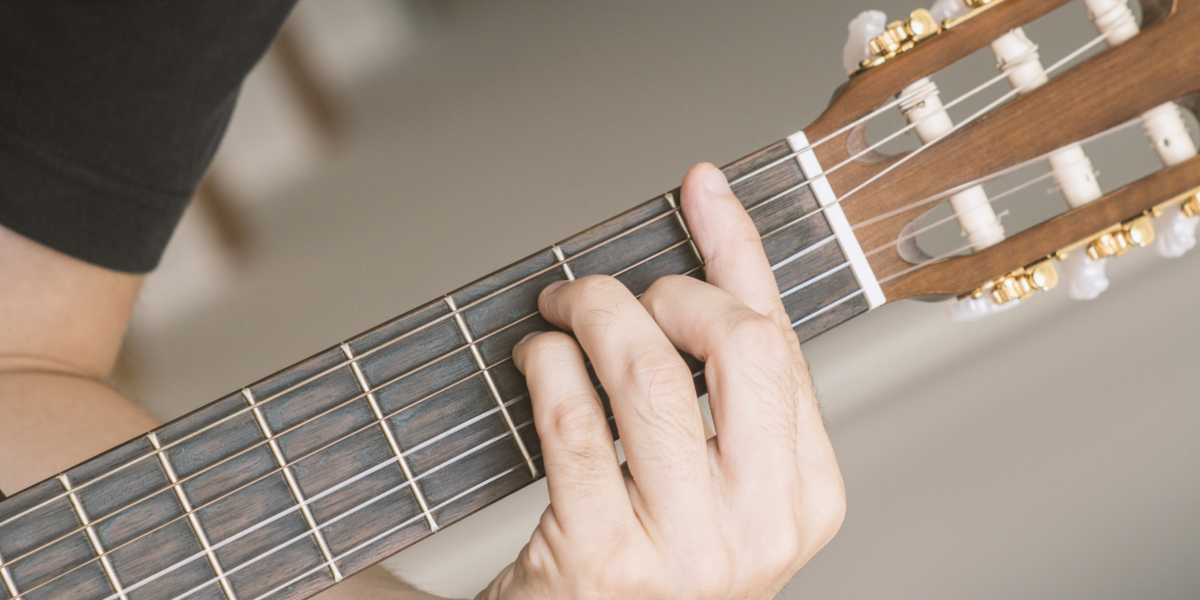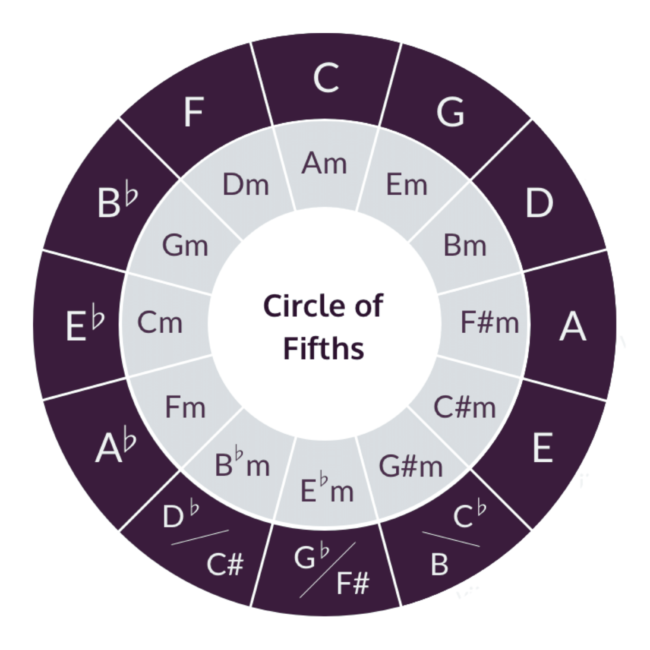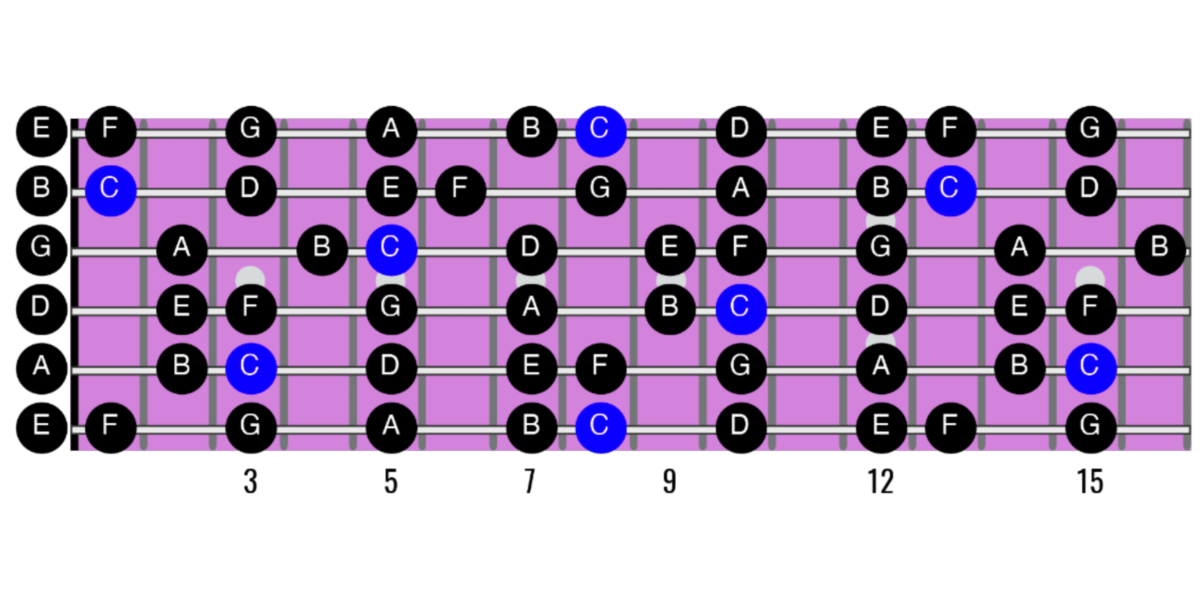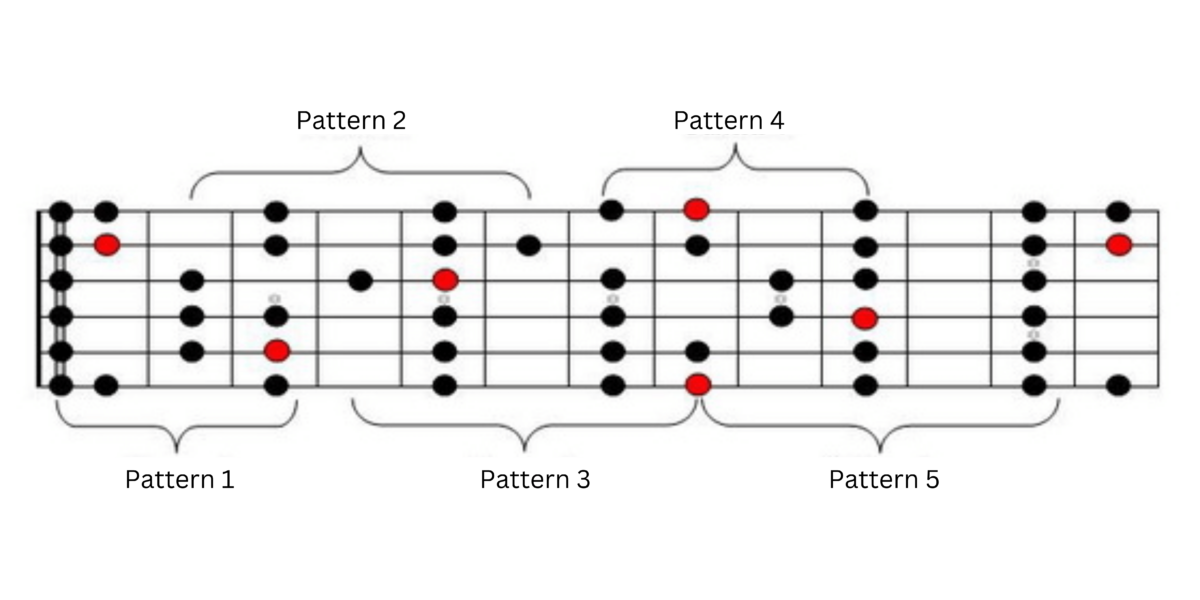How to Play the Major Scale on Guitar for Beginners

In this article, learn what a major scale is, why you should learn it, and find the most important major scales to play on the guitar.
When you first learn the guitar, there are many tips and tricks to help you along the way. One of the best ways to work out your fingers and your brain is to practice scales. Any scale on the guitar is essentially a series of descending or ascending notes in succession. There are many scales to learn, but this article focuses on the major scale.
What is a major scale?
A major scale is a musical scale with seven notes or pitches. Each note is separated by a whole step, except for the third and fourth, separated by a half step.
The major scale’s first, third, and fifth notes are called the tonic, dominant, and subdominant, respectively. The tonic is the first note of the scale, the dominant is the fifth note, and the subdominant is the second or sixth note.

The major scale can be represented by the notation (or “circle of fifths”), which represents all major scales in a circular form. The way the major scale is structured makes it a versatile basis for songwriters in all genres of guitar-based music.
The major scales consist of 7 notes: C, D, E, F, G, A, and B
A C major scale, for instance, starts with C and ends with C.
The note where you begin playing the scale indicates what scale you are playing. If you start with G, you are playing the G major scale. Having a working knowledge of all seven major scales is the best way to improve your skills as a guitarist.

Using the major scale, guitar players can invoke warm, bright notes in their songs and arrangements. This scale is typically the first scale any guitar player should learn and the basis on which many other scales are built.
The major scale is a great basis for guitar players to build chord structures and leads into their music and is something every guitarist should have in their toolbox. Once you learn this scale, you notice that it is the core of most modern guitar music.
Why should you learn how to play scales on guitar?
When it comes to guitar playing, scales are essential to learning the instrument. Scales lay the foundation for understanding how to create melodies, chords, and lead lines on the guitar.
Another benefit of playing scales is using them to warm up before practicing or playing shows. Almost every great guitar player emphasizes the importance of regularly practicing scales.
You can learn many different types of scales on guitar, but the most important one to know is the major scale. The major scale is the building block for all other scales and gives you a starting point for learning how to create new music.
Learning to play scales can seem daunting, but it doesn’t have to be. Start by practicing a few basic major scales and then move on to more difficult ones. Soon you’ll be able to play any scale you want on guitar! You may be surprised by how much knowing major scale patterns up your guitar-playing game overall.
The most important major scales on guitar.
Now that you understand a bit more about the major scale, let’s touch on the most important major scales to learn. Of course, you should eventually learn all the scales to become the best guitar player, but learning these first points you in the right direction.
There are many major scales on guitar, but some are more important than others. The most important major scale is the one you use the most often in your playing. For most guitarists, this is the C major scale. Many popular songs use the C major scale, and it’s a good starting point for learning other scales.
The second most important major scale is the G major scale. Modern guitar and many blues songs use the G major scale.
The third most important major scale is the D major scale. The D major scale is popular, and country songs frequently use it.
Adding in the E and the A major scale gives you the backbone of what is known as the CAGED method or system. A command of the C, A, G, E, and D major scales gives you the tools to write some truly incredible music.
How to practice the major scale.
You can play the major scale on any musical instrument. However, you can play it on a guitar using open or fingered chords.
There are many ways to practice the major scale on guitar. One way is to start with the scale’s root note and play up to the octave. Then, you can play the scale backward from the octave down to the root note.
Another way to practice the major scale is to start on any note other than the root note and play through the scale until you reach the octave.

You can also experiment with playing different sequences of notes within the scale. For example, you could play every other note or start on a different note each time you run through the scale. The important thing is to keep practicing to become familiar with all of the notes in the major scale.
Make sure to play around and have some fun while practicing. Once you know how many notes are in a major scale and what those are, it’s easy to implement them into your music.
Winding down the major scale on guitar.
To wrap up this article, let’s review it.
- The major scale consists of seven notes with a specific pattern of whole and half steps.
- The pattern starts with two whole steps, followed by a half step, then three whole steps, followed by another half step.
- The final note in the scale is a whole step above the starting note.
- If you know the major scale pattern, you can easily find the notes of any major scale on the guitar.
- The major scale comprises two groups of three notes each, called triads.
- The first group, called the tonic, consists of the scale’s first, third, and fifth notes.
- The second group, called the subdominant, consists of the scale’s second, fourth, and sixth notes.
- The seventh note of the major scale is called the leading tone because it leads back to the tonic.
- The major scale comprises the notes C, D, E, F, G, A, and B. These notes are played in a specific order called a scale.
- The C major scale starts on C and goes up to B, then to C again, but one octave above.
By learning to play the major scale, guitar playing becomes fluid and fun. Are you interested in learning to play scales? Downloading the Simply Guitar app is fast and easy — you’ll be playing scales in no time!









